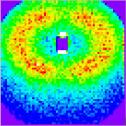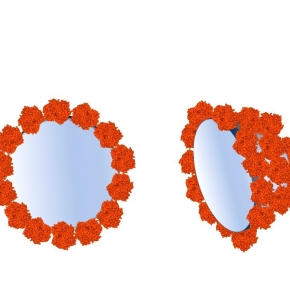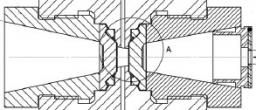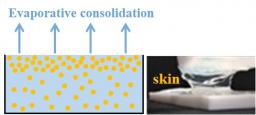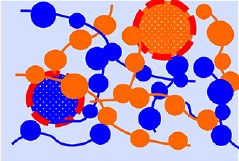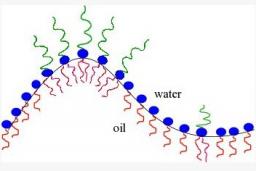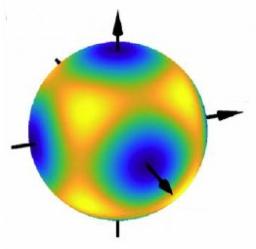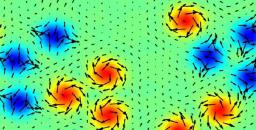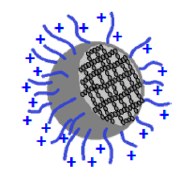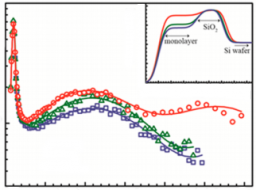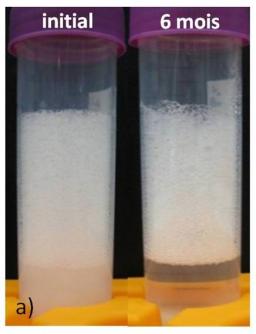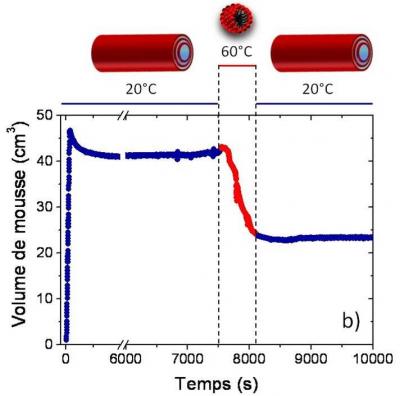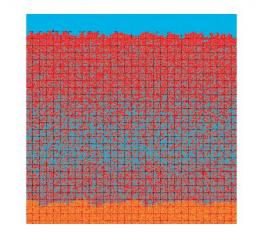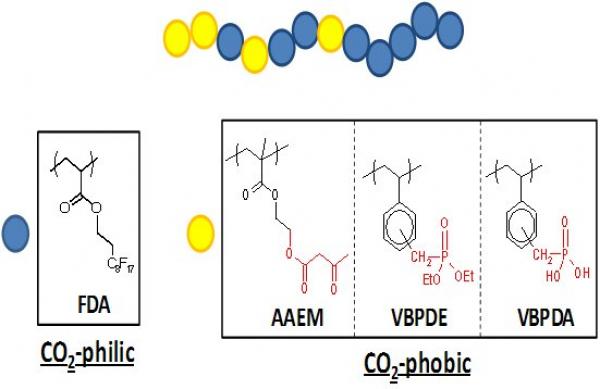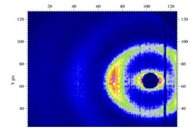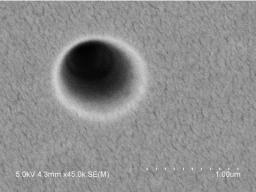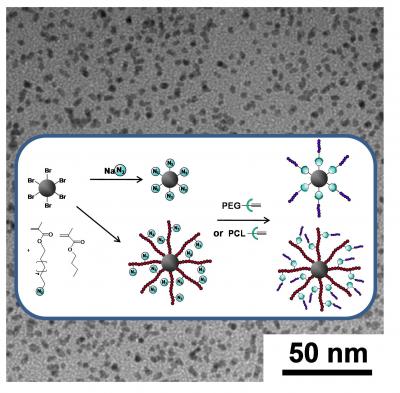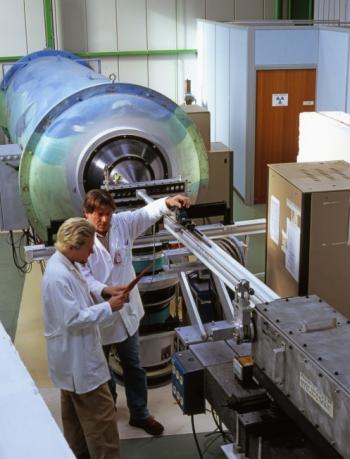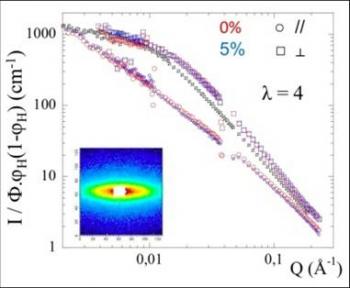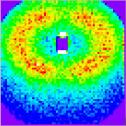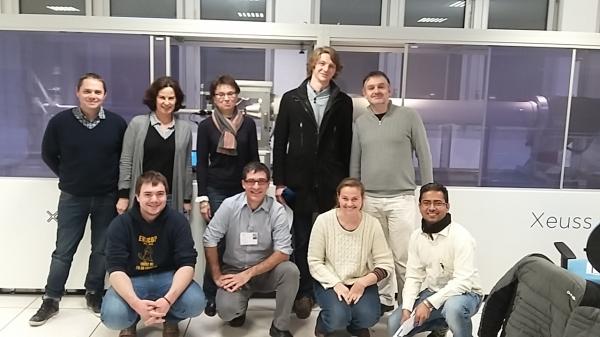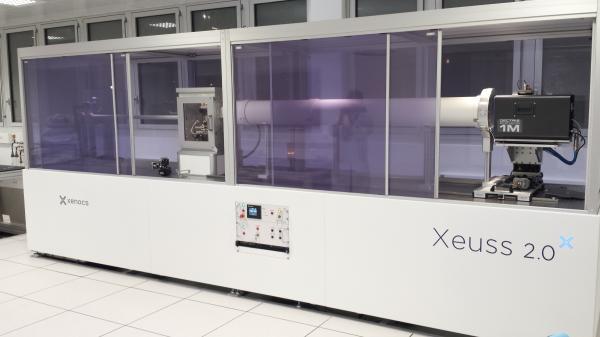Equipe "Diffusion petits angles"


Le groupe travaille essentiellement sur les polymères et les colloides.
Voir la fiche technique : "Small Angle Neutron Scattering - SANS".
Spectromètres : PA20, TPA, Pace, Paxy et Papyrus.
Polymers and colloids are mainy studied by the team.
See the technical sheet: "Small Angle Neutron Scattering - SANS".
#163 - Màj : 29/08/2018
Domaines Techniques
X-rays are used to investigate the structural properties of solids, liquids or gels. Photons interact with electrons, and provide information about the fluctuations of electronic densities in heterogeneous matter. A typical experimental set-up is shown on Figure : a monochromatic beam of incident wave vector is selected and falls on the sample. The scattered intensity is collected as a function of the so-called scattering angle 2 teta.
Diffractomètres de "diffusion de neutrons aux petits angles" : PACE, PA20, PAxy, TPA
SWAXS Lab -Saclay : The SAXS/ GISAXS/ X-ray reflectomer beamline
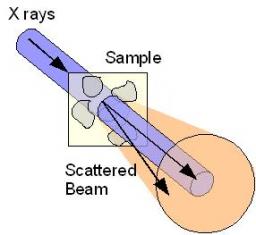
Faits marquants scientifiques
25 novembre 2019
A. S. Sukhanov, Praveen Vir, A. S. Cameron, H. C. Wu, N. Martin, S. Mühlbauer, A. Heinemann, H. D. Yang, C. Felser, and D. S. Inosov
The cubic chiral helimagnets with the P213 space group represent a group of compounds in which the stable skyrmion-lattice state is experimentally observed. The key parameter that controls the energy landscape of such systems and determines the emergence of a topologically nontrivial magnetic structure is the Dzyaloshinskii-Moriya interaction (DMI).
04 mai 2019
B. Annighöfer , A. Hélary, A. Brulet, A. Colas de la Noue, C. Loupiac and S. Combet
Review of Scientific Instruments 90 (2019) 025106
Abstract :
We report on a high pressure (HP) cell designed for the determination of the structure of molecular solutions by small-angle neutron scattering (SANS). The HP cell is fitted up with two thick metallic windows that make the device very resistant under hydrostatic pressures up to 600 MPa (or 6 kbar).
05 mars 2019
Annelies Sels, Giovanni Salassa, Fabrice Cousin, Lay-Theng Lee, Thomas Bürgi,
Nanoscale 26 (2018) 12754.
Aromatic dithiol linkers were used to prepare aggregates of Au25(SR)18 clusters (SR: thiolate) via ligand exchange reactions. Fractions of different aggregate sizes were separated by size exclusion chromatography (SEC).
04 mars 2019
Marguerite Léang, Didier Lairez, Fabrice Cousin, Frédérique Giorgiutti-Dauphiné, Ludovic Pauchard, Lay-Theng Lee
During evaporative drying of a colloidal dispersion, the structural behavior at the air-dispersion interface is of particular relevance to the understanding of the consolidation mechanism and the final structural and mechanical properties of the porous media.
15 février 2019
Burkhard Annighöfer, Arnaud Hélary, Annie Brûlet, Alexandre Colas de la Noue, Camille Loupiac, and Sophie Combet
We report on a high pressure (HP) cell designed for the determination of the structure of molecular solutions by small-angle neutron scattering (SANS). The HP cell is fitted up with two thick metallic windows that make the device very resistant under hydrostatic pressures up to 600 MPa (or 6 kbar).
12 décembre 2018
Souha Ben Mahmoud, Wafa Essafi, Annie Brûlet and François Boué
The chain conformation in sulfonated polystyrene PSSNa of a degree of sulfonation 0.34 ≤ f ≤ 1, i.e., of various hydrophobicity, is followed in mixtures of water and increasing content of tetrahydrofuran (THF), a good solvent of the hydrophobic polystyrene moieties (which improves the solvent quality of the mixture).
20 novembre 2018
Jyotsana Lal
This article is dedicated to the memory of Loic Auvray
The results on Winsor phases, droplet and bicontinous microemulsions phases with polymer-grafted lipids studied by Small Angle Neutron Scattering (SANS) are reported below, together with the contrast variation techniques used to characterize the average curvature in the system.
24 septembre 2018
Fengjiao Qian, Lars J. Bannenberg, Heribert Wilhelm, Grégory Chaboussant, Lisa M. Debeer-Schmitt, Marcus P. Schmidt, Aisha Aqeel, Thomas T. M. Palstra, Ekkes Brück, Anton J. E. Lefering, Catherine Pappas, Maxim Mostovoy, Andrey O.
29 août 2018
I. Mirebeau, N. Martin, M. Deutsch, L. J. Bannenberg, C. Pappas, G. Chaboussant, R. Cubitt, C. Decorse, and A. O. Leonov
Reentrant spin glasses are frustrated disordered ferromagnets developing vortexlike textures under an applied magnetic field. Our study of a Ni0.81Mn0.19Ni0.81Mn0.19 single crystal by small angle neutron scattering clarifies their internal structure and shows that these textures are randomly distributed.
24 mars 2018
Cationic thermoresponsive poly(n-vinylcaprolactam) microgels synthesized by emulsion polymerization using a reactive cationic macro-raft agent
L. Etchenausia, E. Deniau, A. Brûlet, J. Forcada and M. Save, Macromolecules (2018) sous presse.
31 juillet 2017
Three-legged 2,2′-bipyridine monomer at the air/water interface: monolayer structure and reactions with Ni(II) ions from the subphase,
Wenyang Dai, Lay-Theng Lee, Andri Schütz, Benjamin Zelenay, Zhikun Zheng, Andreas Borgschulte, Max Döbeli, Wasim Abuillan, Oleg V. Konovalov, Motomu Tanaka and A.
30 août 2011
Des solutions savonneuses qui moussent, cela n’est pas extraordinaire ; une mousse de savon stable pendant plusieurs mois, même à 60°C, cela l’est davantage. Et d’autant plus, si cette mousse est élaborée par "chimie verte" à partir d’une substance naturelle. Enfin, cette mousse peut être rapidement détruite en modifiant simplement sa température, et ceci de façon réversible.
21 avril 2011
Jacques Jestin, Nicolas Jouault, Chloé Chevigny, François Boué, Laboratoire Léon Brillouin, CEA Saclay
Un moyen d'améliorer les propriétés mécaniques des matériaux plastiques est de les renforcer par des nanoparticules, en formant ainsi un matériau composite.
Publications HAL
Thèses
| 0 sujet /LLB/GDPA |
Dernière mise à jour :
Stages
Images


